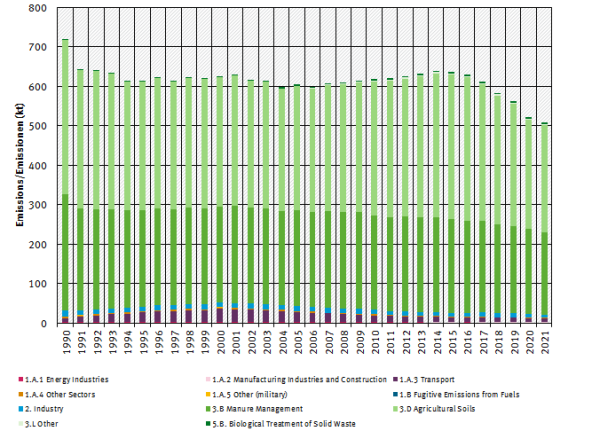meta data for this page
This is an old revision of the document!
Explanation of Key Trends - Ammonia
Obligations
Germany has made a commitment under the Gothenburg Protocol to reduce ammonia emissions. Since 2010, it is no longer permissible to exceed a National Emission Ceiling of 550kt NH₃ for Germany as whole. The revised Gothenburg Protocol and the revised NEC Directive both define emission reduction targets relative to a 2005 base year, mandating 5% (2020) and 29% (2030) reductions respectively.
While Germany's compliance with these obligations is not discussed here, further information on this subject can be found in Chapter 9 - Projections and Chapter 11 - Adjustments and Emission Ceiling Exceedance.
Main drivers
The Main Drivers for NH₃ emissions are agricultural emissions from Manure Management (NFR 4.B) with 42% of total 1990 emissions and a 20% reduction between 1990-2019 and Agricultural Soils (NFR 4.D) with even 53% of total 1990 emissions and a 16% decrease between 1990-2018. The overall emission trend mainly follows the agricultural emissions closely with a total reduction of 18% between 1990 and 2019. The decrease of NH₃ emission in the year 1991 is due to a reduced livestock population that followed after the German reunification, while no explicit trend is discernible for the years up to 2016. Between 2016 and 2019 there is a slight reduction of about 8%, but it has to be seen how stable this trend will be.
NH₃ Emissions 1990-2019



